TRAINING TIPS
Training Tips
Personalized Approach | Knowledgeable Trainers
Personalized Approach
Knowledgeable Trainers
This is a placeholder for the Yext Knolwedge Tags. This message will not appear on the live site, but only within the editor. The Yext Knowledge Tags are successfully installed and will be added to the website.
Do You Have a Good Dog With Some Bad Behaviors?
Many behaviors that our dogs exhibit are undesirable at best, potentially dangerous at worst. Don't despair! Often the solutions are easier than you think. Dream Dogs can offer safe modifications for these and other problems:
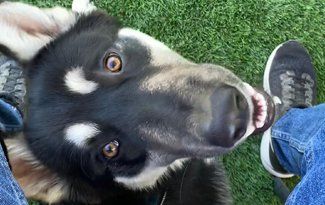
Barking
There are different kinds of barking. Barking generally falls into five categories. To cut down on any kind of barking, give your dog plenty of exercise and arrange for mental stimulation when he is left alone. Feed him using puzzle toys or stuffed Kongs.
Boredom barking
happens when a dog is left alone often and doesn’t get enough exercise or mental stimulation. Dogs are like kids. If you don’t give them something fun to do, they entertain themselves—often in ways we don’t appreciate. So, step up the doggie workouts and get out the puzzles.
Separation anxiety barking
is characterized by constant home-alone barking usually coupled with other behaviors such as house soiling, visible anxiety upon departure and arrival, and destruction around doors and windows. In this case, barking is a symptom of the underlying anxiety, which is what needs to be addressed. Call us right away if you think your dog suffers from separation anxiety.
Barrier frustration barking
often comes with posturing such as snarling or baring of teeth. The three most common occurrences are: Dogs left in a backyard too long, dogs in cars, or dogs on leash that would be perfectly comfortable with whatever they are barking at (most often other dogs) if they were off leash.
With very social dogs, more time spent playing with other dogs and less time spent behind a barrier will greatly improve the problem. Not-so-social dogs first need to learn to enjoy other dogs. In the meantime, avoid unsupervised time in the yard or car.
In either case, always give your dog a treat when he sees another dog but can’t say hi.
Demand barking
occurs in dogs that have learned that barking gets them what they want—balls thrown, doors opened, dinner, or attention. To curb demand barking, immediately stop rewarding the barking: Ignore your dog or walk away when he barks. Pick times when he is quiet, tell him “Nice quiet,” and pet or treat him. If your dog barks when you work at the computer or talk on the phone, preempt his behavior. Settle him in his crate or on his bed with a toy or stuffed Kong before you sit down to work.
Watchdog barking
is triggered by sights and sounds such as passersby, slamming car doors, or a cat on the lawn. Watchdog barkers were sentries in a previous life. Teach your dog to respond to noises by getting a toy or barking once, then coming to find you. Keep blinds closed and don’t put your dog’s bed or his confinement area anywhere near a window or bay door. Crating your dog can be a great way to signal to him that he can take time off from his patrol duties.
Download the instructions above: Barking.pdf

Digging
Many “bad” dog behaviors like digging are developed in our pets because they are just plain bored. Digging is more prevalent in certain breeds of dogs, but any dog that isn’t exercised enough or given enough stimulation and attention can decide to make their own work-out program by excavating your new landscaping.
Try getting “Bobo” out for more walks, spend more time with him when possible, make sure he has an appropriate shelter (he may be digging a “bed” of sorts to get cooler or warmer), and give him different toys if you have to leave him unattended in your yard. If he is just obsessed with digging all the way to China, you can try to bury chicken wire or aluminum foil in their favored area (they usually don’t like these under their feet), or better yet designate a spot in your yard for his own approved sand box. Clearly define an area and encourage him to dig there and only there. If you catch him digging out of bounds, you can interrupt with a firm “NO”, put them in their digging space, and tell them “GOOD!”.
Punishment won’t stop a determined dog – you can’t just tell them what you don’t want them to do, give them something you do approve of them doing and REWARD it.
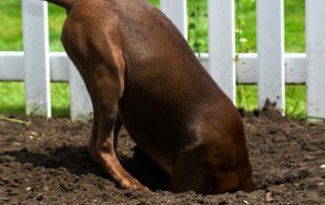
Potty Training
The 2 rules for house-training success.
- Prevent Accidents. Supervise your puppy in the house. Use a crate when you are not sure if your puppy is empty.
- Reward your puppy for going outside. Praise at the right moment, i.e. the second he starts “going.” Reward with a treat after he is finished.
Preventing Accidents: Long-Term and Short-Term Confinement
What is long-term confinement?
A place for your puppy to stay when you can’t provide 100% supervision. In other words, when you are out, or busy around the house, and can’t keep your eyes on him the entire time. It prevents chewing accidents, potty accidents, and teaches your puppy to be alone.
Confinement? Surely that’s too strict?
Not at all. It is the best possible start for your puppy in your household. People often give a new puppy complete freedom right away. Then, when he has an accident on the carpet or chews on the legs of the coffee table, they confine him, and confinement becomes a punishment.
Instead, give your puppy a safe place from the beginning, and let him make a gradual and successful transition to his new home. He will be much happier and your furniture will be intact.
When do I use it?
Use a long-term confinement area if you will be gone longer than your puppy can hold it.
Setting up the confinement area.
The ideal confinement area is easy to clean and easy to close off with a door or baby gate. It should be mostly free of furniture and non-puppy related objects. The best places for a confinement area are the kitchen, laundry room, bathroom, or an empty spare room. Furnish with:
- A puppy potty pad or litter box
- Your puppy’s crate (with the door open)
- Water and food bowls
- A chew toy or Kong
Getting your puppy used to his confinement area:
- Step 1. Take your puppy out for a walk or bathroom break.
- Step 2. Give him a chew bone or a stuffed Kong. Leave him alone in the confinement area while you go about your business in the house.
- Step 3. After 5 minutes or before he finishes his chew, let him out but don’t make a big deal about it or make a fuss over him.
Leave your puppy in his confinement area (or crate) at night. It is normal for him to try a little crying as a strategy to get out, so brace yourself for that. He has to get used to alone-time.
- Step 4. Within the first day or two, start leaving the house for really short intervals like going to the mailbox or taking out the trash. Gradually work up to longer absences, like running errands.
What is short-term confinement?
It means crating your puppy. A crate is a terrific training and management tool. It is useful for house-training, brief alone-time, settling, and any form of travel. Most importantly, a crate teaches your puppy to hold it when he has to go to the bathroom. A crate helps your puppy in many ways—and saves your carpets.
Is using a crate cruel?
Absolutely not. A crate can be your puppy’s favorite place in the world. Think of it as his crib. Use treats, praise, and toys to make your puppy love his crate.
JUST REMEMBER NEVER TO USE THE CRATE FOR MORE THAN 3-4 HOURS AT A TIME, EXCEPT FOR BEDTIME.
When do I use it?
Use the crate for short absences. General guidelines for crating puppies:
- 8-10 weeks up to 1 hour
- 11-12 weeks up to 2 hours
- 13-16 weeks up to 3 hours
- Over 4 months up to 4 hours
Getting your puppy used to the crate.
- Step 1. Begin crate training right away—preferably the first day your puppy is in your home.
- Step 2. Throw small tasty treats into the crate one at a time. Praise your puppy when he goes in to get the treat.
- Step 3. When your puppy is comfortable going into the crate, practice closing the door for 1-2 seconds, then treat him through the door. Let him back out. Repeat this step many times, gradually building to 10 seconds.
- Step 4. Stuff a Kong with something very yummy or use a special bone that will take a lot of time to chew. Put the chewies in the crate. Shut the door. Move about the house normally. Let your puppy back out after 5 minutes or when he finishes his treat. Don’t make a fuss over him. Repeat this step several times, varying the length of your absences from 1 to 20 minutes.
- Step 5. Next, leave your puppy in the crate with something delicious while you leave the house for short errands, like getting the mail or watering the garden. Gradually build your absences.
How to house-train.
- Step 1. Take your puppy outside on leash. Take him to the same place every time.
- Step 2. When he goes, praise. Offer him a treat when he is finished.
- Step 3. If you are in a puppy-safe place, let him off the leash for a little playtime.
If he doesn’t go within 5 minutes, put him in his crate for 10-20 minutes, then try again.
A house-training checklist.
- Take your puppy to his potty place first thing in the morning, last thing before bed, shortly after meals, naps, or play sessions, when he comes out of his crate, and generally every hour or so.
- Until your puppy is perfectly house-trained, always go outside with him so you can cheer and reward at the right moment.
- Supervise whenever your puppy is not crated, especially if he is full. If you must take your eyes off him, even for a minute, crate him or put him in his confinement area.If you see your puppy sniffing and circling in the house, take him out immediately.
How to handle house-training mistakes.
Interrupt mistakes as they are happening. Don’t be too harsh or your puppy will be afraid to go in front of you. After interrupting your puppy, hustle him outside to the potty area. Praise if he finishes there. Clean up the indoor mess with an enzymatic cleaner to remove protein residue that might attract him to the same place again.
Never punish.
If your puppy made the mistake one hour or five seconds ago, you are too late. Don’t rub his nose in his own mess or smack him, this will simply make him afraid of you, and he won’t understand why you do it. You must catch him in the act for the interruption to work, and again, you can’t do it too harshly or your puppy will be afraid to go in front of you.
When do I give my puppy free run of the house?
Not until your puppy is chew trained as well as house-trained. This can be as late as 12-14 months old.
Then…
At first, confine him to one room at a time. Choose a tiled room, like the kitchen or the bathroom, so accidents can be easily cleaned. Add a room each week your puppy is successful (accident-free), and supervise each time you introduce him to a new room.
For now, enjoy puppyhood - it doesn't last long!
Download the instructions above: House Training Puppy.pdf
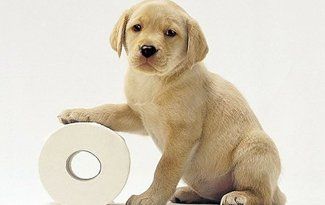
Sign Up for more training tips today!
Sign Up
"Lori is the best! Help your dog reach their highest potential and have fun doing it."
- Kim Weaver
VISIT US
,
This is a placeholder for the Yext Knolwedge Tags. This message will not appear on the live site, but only within the editor. The Yext Knowledge Tags are successfully installed and will be added to the website.
This is a placeholder for the Yext Knolwedge Tags. This message will not appear on the live site, but only within the editor. The Yext Knowledge Tags are successfully installed and will be added to the website.
HOURS
This is a placeholder for the Yext Knolwedge Tags. This message will not appear on the live site, but only within the editor. The Yext Knowledge Tags are successfully installed and will be added to the website.
HOURS
This is a placeholder for the Yext Knolwedge Tags. This message will not appear on the live site, but only within the editor. The Yext Knowledge Tags are successfully installed and will be added to the website.
Monday
Tuesday
Wednesday
Thursday
Friday
Saturday
Sunday
This is a placeholder for the Yext Knolwedge Tags. This message will not appear on the live site, but only within the editor. The Yext Knowledge Tags are successfully installed and will be added to the website.
Monday
Tuesday
Wednesday
Thursday
Friday
Saturday
Sunday
This is a placeholder for the Yext Knolwedge Tags. This message will not appear on the live site, but only within the editor. The Yext Knowledge Tags are successfully installed and will be added to the website.
CONTACT US
This is a placeholder for the Yext Knolwedge Tags. This message will not appear on the live site, but only within the editor. The Yext Knowledge Tags are successfully installed and will be added to the website.
Hi. Do you need any help?
Privacy Policy
| Do Not Share My Information
| Conditions of Use
| Notice and Take Down Policy
| Website Accessibility Policy
© 2024
The content on this website is owned by us and our licensors. Do not copy any content (including images) without our consent.



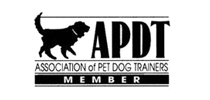


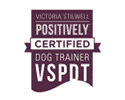
Share On: